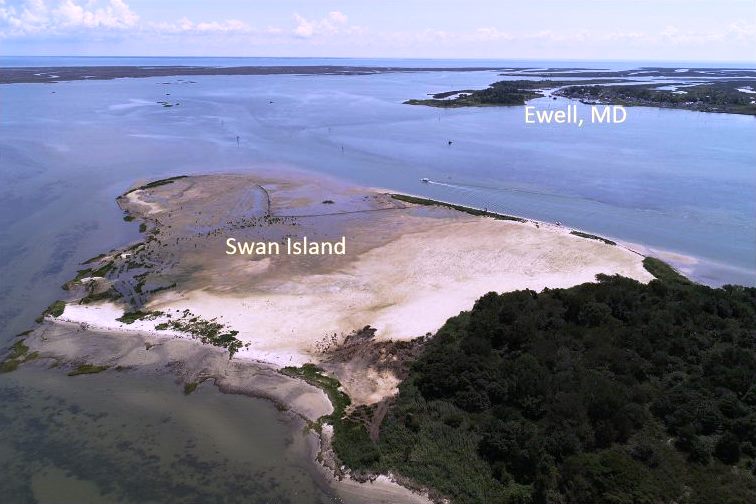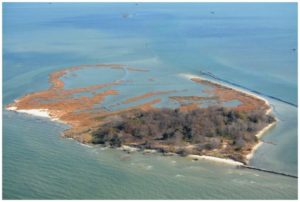Coastal islands and marshes in Chesapeake Bay are disappearing, along with the ecosystem services and shoreline protection benefits they provide. Within the last half century, the cumulative effects of shoreline erosion, land subsidence, inadequate sediment supply, and sea level rise have accelerated the rate of island submergence.
NOAA’s National Centers for Coastal Ocean Science (NCCOS), the U.S. Army Corps of Engineers (USACE), and their partners have reversed this trend on Maryland‘s Swan Island. Once in danger of being washed away, the island’s land and habitat have now been restored.
“This restoration was designed to restore habitat lost to shoreline erosion, recreating tidal marsh and dune habitats, as well as buffer navigation channels and the town of Ewell from the wave energy of the open Chesapeake Bay,” officials at Blackwater National Wildlife Refuge said. “The National Oceanic and Atmospheric Administration (NOAA), in partnership with the USACE, Maryland DNR, and the refuge, is leading an effort to monitor the outcomes of this restoration.”
From October 2018 to April 2019, the USACE Baltimore District dredged nearby navigation channels and placed roughly 70,000 cubic yards of the dredged sediments on Swan Island, enough to fill 21 Olympic-size swimming pools.
Then, in June and July of 2019, the Baltimore District planted approximately 200,000 marsh and dune plants on the island. Navigation channels often require dredging to remain passable. The dredged sediments can serve as building material for habitat restoration and shoreline stabilization projects.
NCCOS scientists are collecting the physical and ecological data necessary to evaluate the impacts and benefits of restoring Swan Island. In the coming years, NCCOS and USACE researchers will monitor the progress of the restoration effort, which is expected to enhance the island’s natural habitat and capacity to shield the neighboring town of Ewell, Maryland, from wave energy.
Officials at NOAA’s National Centers for Coastal Ocean Science explained, “Coastal islands and marshes in the Chesapeake Bay are disappearing, along with the ecosystem services and shoreline protection benefits they provide. Within the last half century, the cumulative effects of shoreline erosion, land subsidence, inadequate sediment supply, and sea level rise have accelerated the rate of island submergence.”
Project partners include NCCOS, the USACE Baltimore District, the USACE Engineer Research and Development Center, the U.S. Fish and Wildlife Service, the Maryland Department of Natural Resources, and Engineering With Nature®. The data products developed through the project will inform the design of future sediment-based habitat restoration activities in Chesapeake Bay.
Photos courtesy of NCCOS.


